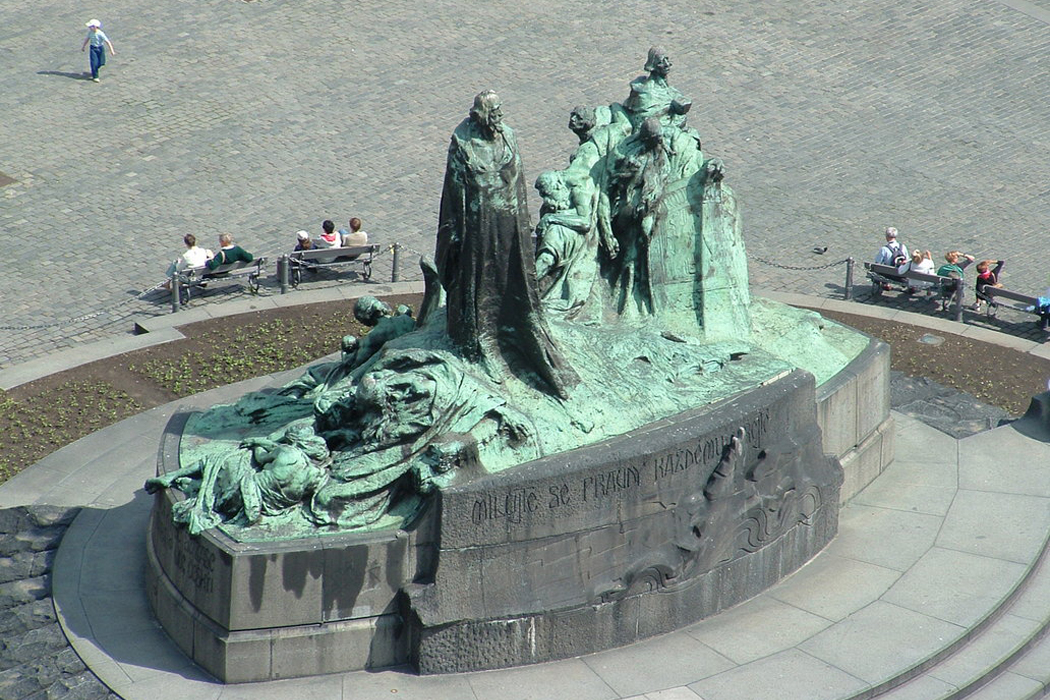Events marking the anniversary of the martyr death of Czech church reformer, Jan Hus, will culminate on Monday, July 6, when 600 years have passed since his burning at the stake.
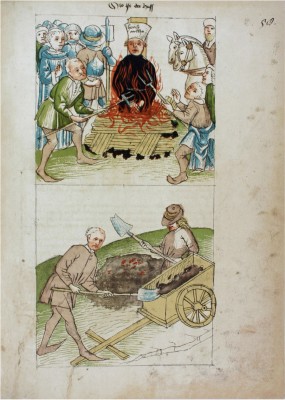 In the early morning on the 6th of July 1415 the Czech reformer, Jan Hus, was taken from his prison to the Cathedral in Constance after having spent 219 days incarcerated under more or less horrible circumstances. Here he was made to sit on an elevated platform to listen to a sermon, preached by the Dominican, Jacob Balardi Arrigoni. The text was Romans 6:6 – “We know that our old self was crucified with him in order that the body of sin might be brought to nothing, so that we would no longer be enslaved to sin.” (ESV).
In the early morning on the 6th of July 1415 the Czech reformer, Jan Hus, was taken from his prison to the Cathedral in Constance after having spent 219 days incarcerated under more or less horrible circumstances. Here he was made to sit on an elevated platform to listen to a sermon, preached by the Dominican, Jacob Balardi Arrigoni. The text was Romans 6:6 – “We know that our old self was crucified with him in order that the body of sin might be brought to nothing, so that we would no longer be enslaved to sin.” (ESV).
Prior to the commencement of the actual business of condemning Jan Hus, the public was silenced under punishment of excommunication, fines and a prison sentence. This threat was voiced against anyone interrupting with noise, mouth, hands, feet, or by signs and gestures. Following this the bishop of Concordia read the final sentence. According to this Jan Hus was a definite heretic who had seduced the Christian people away from their true faith. In this he had been obstinate and incorrigible. For this he should be defrocked from the priesthood and handed over to the secular court.
Hus was then defrocked and made to wear a mitre upon which demons were depicted. About six to eight bishops are said to have taken part in this procedure. After this his books were burned in the street near the episcopal palace and he was handed over to the secular authorities and marched through the narrow streets to the meadow at Brüel. Here his clothes were removed – two black coats of good cloth, a gown, stockings, shoes, an ornamented belt, two knives in a sheath and a letter purse with some money. All items were burned in order to secure that no relics were left to be revered by his adherents. His ashes were dumped in the river Rhine.
In a sermon later preached in the Bethlehem Chapel in Prague the actual event was thus described:
Then he was handed over to the secular authorities, which led him to the place of his execution and death. On the way he shouted that false and twisted testimonies were submitted and that no one should believe that he advocated any heretical article. When he arrived at the place of execution, he knelt down and prayed with a joyful heart and a bright countenance. Then they stripped him down to his shirtsleeves, chained and roped him to a stake and piled wood around him to such a height that his head was barely visible—I omit other details. When the strong flames blazed up, he stopped singing and praying. But his spirit as we devoutly believe, reached with the flames to heaven, to the company of angels, just as Elijah did.[1]
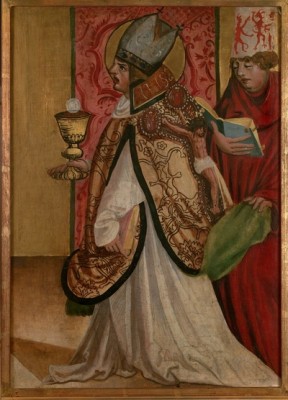
What was his crime? This is no simple matter explaining as the sources are extremely wide-ranging and diverse. Apart from his own very extensive writings, we have those of Wycliffe, which he without doubt was inspired by; to this should be added the many more or less official documents which transpired from his trials (of which there were several) plus the many chronicles, letters and other sources, which present us with a general introduction to the man, his life and his times. To complicate matters further, his execution was the instigation of the so-called Hussite wars, which raged in Bohemia for decades. Later Martin Luther counted him as one of his precursors. Finally he came to play a significant role as a Czech national hero in the 19th and 29th centuries; as such he was once more condemned to fulfill a role, which was not one of his choice. Might he, himself, have chosen, he would probably have lived out his life as a venerated preacher in the Bethlehem Chapel in Prague and as a high-ranking official at the University in Prague where he began his work as a reformer.
The basic facts are that he was a university teacher and priest, who criticized the Catholic Church for diverting from its original ideals, the priests’ immoral lifestyle and the trafficking in indulgences. He also condoned a number of the convictions held by Wycliffe and the Lollards. He refused to revoke his teaching, was accused of heresy and burnt at the stake by a decision of the Church Council in Constance on July 6, 1415.
Monday 06.07.2015 it is thus 600 years since he was burned at the stake and several events have been planned, particular in Prague, Constance and elsewhere
Prague
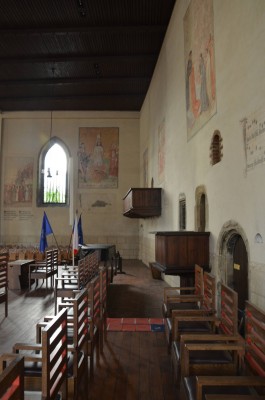
The Hus festival has been organized by several churches and will be held in the center of Prague on July 5–6. The Monday events will end with a silent march to the Vltava River.
But a number of Czech institutions have also organized exhibitions, symposiums and conferences focusing on Hus’s work and his importance for both past and present.
Of note is the current exhibition in the Salm Palace in Prague, which serves to commemorate the actual burning of Master Jan Hus at the Stake. On show are a number of works from the National Gallery in Prague outlining his significant 19th century role as national icon and symbol of all that is Czech. This Exhibition has been curated by Irena Nỳvltová.
Since Hus was also a Prague university master, The Charles University has prepared an exhibition presenting Hus as a student, teacher, dean and rector of this university. This is housed in the historical building, the Karolinum, until 28.08.2015. An Academic Assembly dedicated to Hus will be held there, with Prime Minister Bohuslav Sobotka attending.
An exhibition on Hus will be also opened in the seat of the Senate and Hus’s letters from Constance will be read in the Church of St Martin.
On Saturday night, “son et lúmiere” performance entitled “The Bethlehem Odyssey” will be staged at the Bethlehem Chapel, where he preached.
Constance
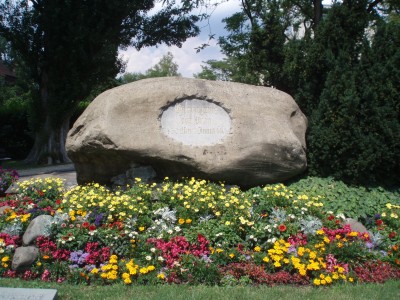
In Constance three days of commemoration have been planned with events ranging from religious services to the unveiling of a new sculpture – Jan Hus – Weg zur Versöhnung”. A special memorial will be held at the Hussenstein in Paradies in the suburb of Constance, where he was burned to death.
There are no new exhibitions planned on the history of the events in Constance 2015, but it is suggested that a visit to the Hus-Haus where there is a permanent exhibition should be part of a visit to Constance, which in general celebrates the Council in Constance 1414 – 18 with other exhibitions and events.
The European Council is investing a lot of energy in organizing so-called cultural routes. Such a “Hussite Route “ has been planned. It invites tourists to visit the places where Jan Hus lived or passed through.
Of this initiative, nothing has as yet been made available on the internet. However one specific place where any “hussite” pilgrim has to travel is Tabor.
The City of Tábor
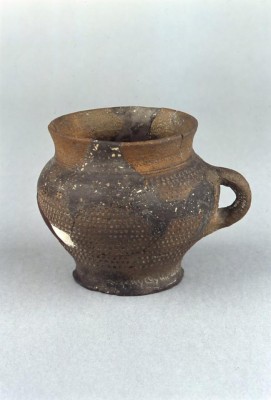
This small Town was founded in the spring of 1420 by Petr Hromádka of Jistebnice and Jan Bydlínský of Bydlín from the most radical wing of the Hussites. They called it Tabor after the biblical mountain and organized a radical community characterized by communal living. Private property was not allowed and strict (Im)moral rules guided the relations between men and women. In 1437, after the Hussites’ war came to an end, Tabor became a free city under royal protection and a thriving commercial hub.
The historical part of the city is situated on the summit of an isolated hill separated from the surroundings by the by the Lužnice river and by an extensive lake, to which the Hussites gave the biblical name of Jordan. Tabor was constructed as a fortified city, where the central part was rendered inaccessible by narrow streets, which could be defended from the rooftops. Beneath the city was an ingenious labyrinth of tunnels, which connected streets and houses. Part of this system is open to the public.
Tabor houses its museum in the former Gothic townhall. Here a major exhibition has been mounted in commemoration of Jan Hus 1415 – 2015. A large number of spectacular exhibits have been borrowed locally as well as from abroad, making this one of the central ‘events’ this year, when Europe is commemorating its protestant ‘saint’.
To the unique exhibits belong the late gothic altar-wings from Roudníky village (Hussite Museum), the altar panel from Vlíněves village lent by the Lobkowicz collections and a predella from the Church in Chrudim (Chrudim Regional Museum). On show will also be the cutting of the so-called Hus’ cloak, which was found some years ago at the Musée Unterlinden in Colmar.
But the exhibition also seeks to explore the cultural and social background of Jan Hus and his daily life: what kind of food he ate or what kind of clothes he wore.
NOTES:
[1] The text of the sermon appears in Fontes rerum bohemicarum, vol. 8, pp. 231–242, with the citation on p. 240. Here quoted from Thomas A.Fudge: closing arguments. In: The Trial of Jan Hus: Medieval Heresy and Criminal Procedure by Thomas A. Fudge. Oxford University press 2013. The description of the final day of the trial stems from this publication.
SOURCES:
Jan Hus 600 (Constance)
SEE MORE:
READ MORE:
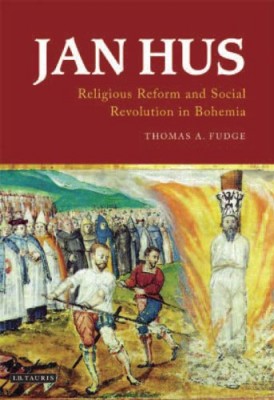 Jan Hus: Religious Reform and Social Revolution in Bohemia
Jan Hus: Religious Reform and Social Revolution in Bohemia
by Thomas A. Fudge
Series: International Library of Historical Studies
I B Tauris & Co Ltd 2010
ISBN-10: 1848851421
ISBN-13: 978-1848851429
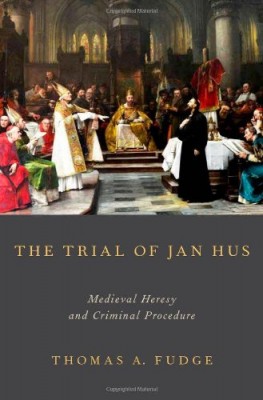 The Trial of Jan Hus: Medieval Heresy and Criminal Procedure
The Trial of Jan Hus: Medieval Heresy and Criminal Procedure
by Thomas A. Fudge
Oxford University Press 2013
ISBN-10: 0199988080
ISBN-13: 978-0199988082
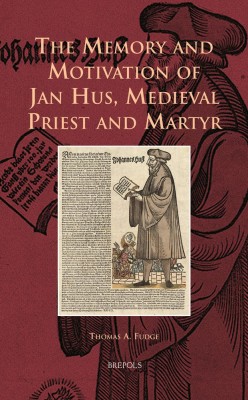 The Memory and Motivation of Jan Hus, Medieval Priest and Martyrby ThomasA Fudg
The Memory and Motivation of Jan Hus, Medieval Priest and Martyrby ThomasA Fudg
Brepols 2013
ISBN-10: 2503544428
ISBN-13: 978-2503544427
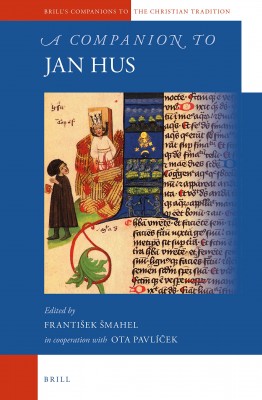 A Companion to Jan Hus
A Companion to Jan Hus
Edited by František Šmahel, in cooperation with Ota Pavlíček
Brill 2014
ISBN: 9789004280557
E-ISBN: 9789004282728
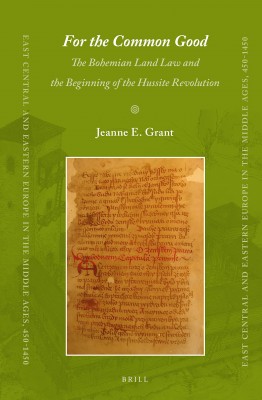 For the Common Good. The Bohemian Land Law and the Beginning of the Hussite Revolution
For the Common Good. The Bohemian Land Law and the Beginning of the Hussite Revolution
By Jeanne E. Grant
Brill 2015
ISBN-10: 9004282890
ISBN-13: 978-9004282896
